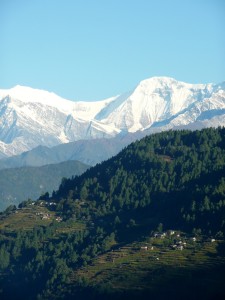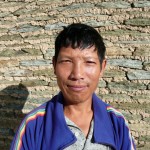In 1994, two years after finishing his undergraduate degree in Science Education at the University of Nebraska in Kearney, Mahabir was teaching and living in Nangi. The village school, partially funded by the government, paid for education only up to the seventh grade. Mahabir had added an eighth and ninth grade. The teachers’ salaries for the eighth and ninth grades were funded by private donations from colleagues and friends in Nebraska. More students came from distant villages to study at the higher level. Despite this success he was not satisfied; donations are not sustainable, nor do they foster self-reliance.
That year he collaborated with a Japanese organization called The Institute for Himalaya Conservation to build a campground in Nangi. His principles were closely aligned with IHCs major goal to nurture creativity, and self-reliance for village development so it was a symbiotic partnership. The IHC funded a campground along with a community dining room, kitchen and shower/toilet facility. Ground was leveled in tiers to accommodate the large tents used by trekking agencies. Trekking companies, both foreign and Nepali based, started bringing groups of trekkers. For two years the camping business grew and provided income for the school…Mahabir’s dream was taking flight…only to be literally shot down by a civil war.
In 1996 the Nepali Civil War erupted between the government and the Communist Party of Nepal (Maoists). Over the next ten years Mahabir’s dreams were sidetracked by a civil war that killed more than 15,000 people and disrupted rural development. Yet despite a civil war, fleeing tourists and NGOs pulling financial support he managed to fly under the war’s radar and continue a personal war against poverty and ignorance.
Join me next week for the continued saga of my trip to Nangi…meet my old and new friends…especially the children.



Deb
What are they farming on the tiers?
In the picture of the mountains I can see some kind of tiered land almost like a vineyard Or something? Just curious.
I am addicted to your story!!! keep writing!
Xoxo harriett
Throughout the foothills of Nepal the land was terraced to increase agricultural production, avoid runoff from the torrential monsoon rains and preserve nutrients which wash down to the next level because the majority of people were subsistence farmers. Potatoes, millet, barley, wheat, and vegetables such as onions, tomatoes, cabbages, cauliflower, broccoli, greens, garlic and flowers are grown on the terraced fields. In the lower elevations rice is the major crop.